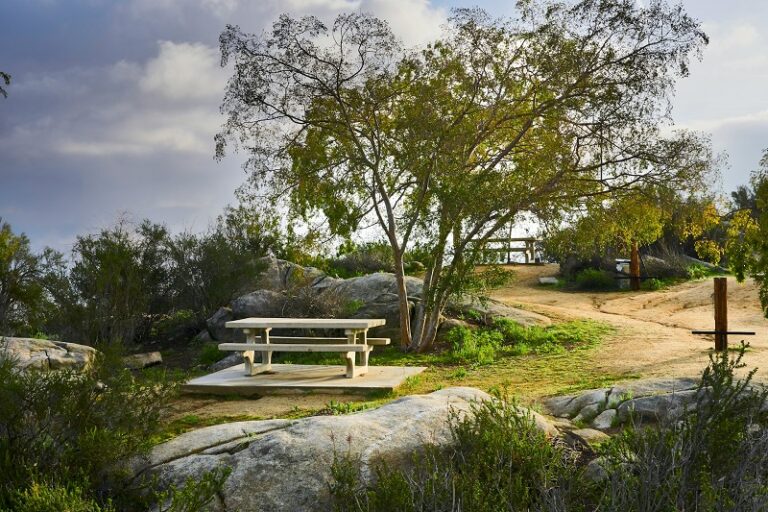Choosing the right kinds of picnic tables is important to improving the looks of any outdoor zones – parks, school grounds or business facilities. They are not just for dining, they are used for lounging, working, and lots of other things.
When searching for picnic tables, you should be most concerned with the sturdiness and low-maintenance factor. But what makes for long-lasting and durable picnic tables? This is what we shall be looking at in this article.
Understanding Materials for Durability
Choosing the appropriate material for use in commercial picnic tables is always a delicate step because it defines the sturdiness of such tables. Some of the common materials that are widely used are wood, metal, and recycled plastics—each different with its own pros and cons.
Wood is used because it has a grain and is strong, sturdy and quite coarse yet beautiful. It however, is a UV and water sensitive material, which means that iti requires regular treatment to prevent degradation and wearing off. Yes there are woods that do not rot easily such as cedar and teak, but even these have to be recoated often since the wood starts to warp without any maintenance.
An advantage of using metal tables is that they are easy to clean and they are less prone to getting spoilt. Some of the most commonly used metals include steel and aluminum; steel is very hard while aluminum is light and cannot corrode easily. Nonetheless, the main drawback is its susceptibility to corrosion when not protected or treated properly such as when exposed to a salty or humid environment.
Recycled plastic is gradually making its way to the market due to its environmentally friendly attributes and also because it is easy to maintain. Its surface does not fall prey to fading and cracking as the tables are designed to withstand any type of climate. It comes in handy, especially for regions that tend to experience high humidity and sunlight exposure.
Maintenance Tips for Longevity
It’s critical to maintain commercial picnic tables to increase their durability irrespective of the material used. Here’s what you need to do:
a. Regular Cleaning
It is vital to clean the tables by washing them with soapy water after using them. This reduces the likelihood of the formation of dirt and other materials on the surface that may cause wear after use.
b. Immediate Repairs
It is also essential to fill any hole or crack, splinter, or rust spot which occurs on the furniture as early as possible in order to avoid further damage.
Material-Specific Maintenance Processes
a. Wood
Apply an annual coat of wood preservative or waterproofing sealer to wooden tables—to serve as a barrier against moisture penetration and ultraviolet radiation. Some wooden tables may require sanding to remove bumps and rough edges and to help avoid splintering.
b. Metal
For metal tables, clean often and apply an anti-rust coating annually, and if there are scratches or any exposed portions, paint them as soon as possible.
c. Recycled Plastic
Plastic tables require some maintenance as they accumulate dirt and stains that require regular cleaning with mild soap and water.
Design Features Aimed at Increasing the Lifespan
When choosing commercial picnic tables, opt for design factors that assume the main function of improving the durability of the chosen products. Go for:
a. Reinforced Structures
This type of table is said to be more stable since some of the parts incorporate joints and structural supports, making it more suitable for heavier-load utilization and unforgiving usage.
b. UV-Resistant Coatings
These coatings protect the material from fading, cracking or deteriorating under the effect of UV light, which keeps the table looking beautiful and strong for longer.
c. Protective Edging
The use of round edged tables will help prevent wear and tear by making them less susceptible to damage due to impacts as well as usage. Tables with sharp edges are more vulnerable to wearing out.
d. Weatherproofing
The fixtures used on the tables should withstand harsh weather, and in case of wooden furniture, varnishing and treating the wood with a waterproof solution keeps the wood strong in all weather; metal furniture also requires protection from rust by applying a rust resistant coating.
The Importance of Design in Preventing Damage and Easing Maintenance
With well designed picnic tables, not only do they last longer but they are also easier to maintain as compared to poorly designed ones. Well constructed and well designed commercial picnic tables would take a long time to get spoiled or disfigured beyond repair, hence less amounts of money is required to be spent on such tables.
Selecting the Proper Picnic Table for Your Requirements
Identifying the needs below will lead you to select a picnic table that in addition to meeting its functional needs, corresponds to the surroundings—in order to avoid dissatisfaction and early abandonment.
a. User Capacity
It is important to think about how many people would be sitting at the table on a daily basis. A larger table or a set of several smaller tables may be required, based on the amount of traffic expected.
b. Accessibility
Make sure that the table is within the reach of all the consumers—inclusive of disabled persons. Tables that are to be placed in various public areas need to conform to ADA standards in terms of height and clearance for wheelchair access.
c. Aesthetic Considerations
The picnic tables should not only be comfortable but also blend with the existing environment and other furniture available. This can improve the aesthetic appearance of the given area in terms of its functionality and appeal.
d. Purpose and Placement
Determine the functional purpose of the tables—will the tables be used for eating, working, or entertainment? Also, consider their placement: will they be in a shaded area where no sun can directly touch them, need to be anchored to prevent them from being blown away by the wind, or frequently moved from one place to another?
Conclusion
When selecting commercial picnic tables, the main need is to find a balance between the price that has to be paid at the moment and the durability of the table that is to be bought. There is always a tendency to go for cheap furniture but this may be a bad idea, as quality tables are relatively cheaper in the long run. High quality materials and superior design features, for instance, robust frameworks and resistant coatings, often come at a higher price but require less replacement or repair in future. This means fewer replacements and repairs, which can help you to save money and mitigate inconvenience for businesses and public facilities.






